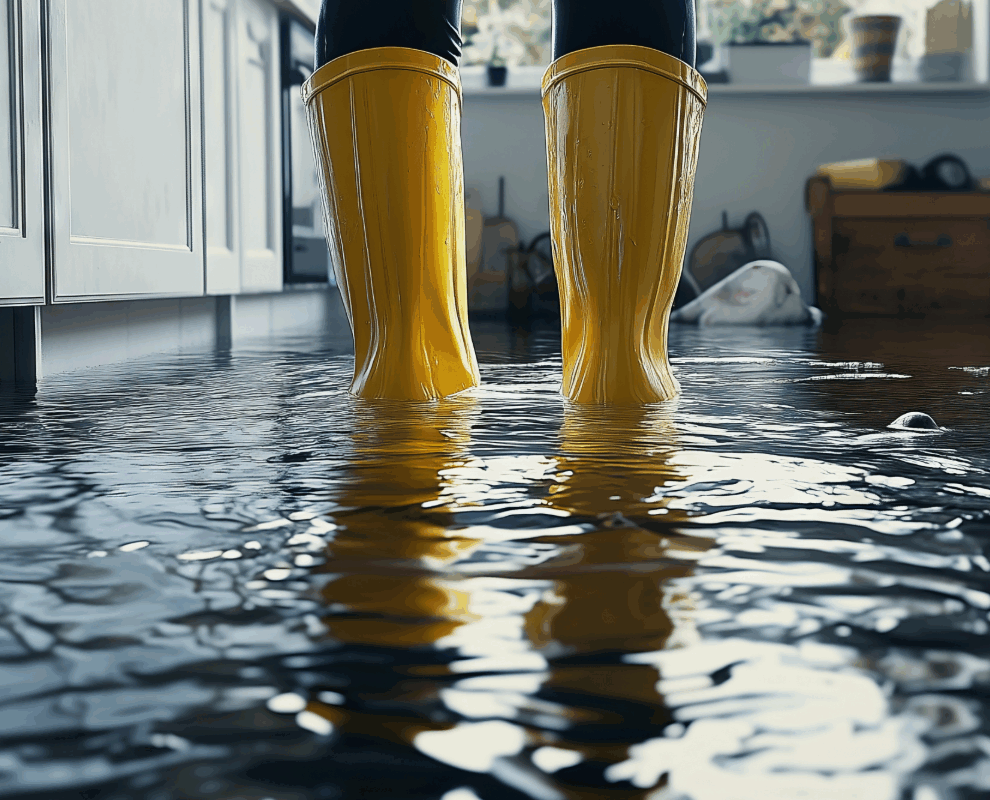Every property investor knows water is a property’s silent assassin. It seeps, spreads, and destroys long before you notice it. But what most landlords miss, and what can turn a manageable repair into a financial gut punch, isn’t just the leak itself. It’s the way your insurance policy treats that damage.
In our latest collaboration video with Initio Insurance, When It Rains, It Claims, Hannah Gabbie, Head of Claims at Initio Insurance, breaks down a costly distinction that every landlord must understand: the difference between sudden and gradual water damage.
“Your policy is designed to cover sudden and accidental damage,” says Gabbie. “But gradual damage, like a slow leak hidden under a bathroom floor, falls under a completely different part of the policy with its own limits. For Initio, that’s $3,000. For other insurers, it can be $1,000 or less.”
That’s not just an insurance technicality. It’s the difference between your insurer covering a full $50,000 repair… or handing you a $1,000 cheque while you shoulder the rest.
Why the Distinction Matters
Most landlords assume if water damage is discovered, it’s covered. Not so. If the damage happened over time, weeks or months of a slow drip, it’s classed as gradual. That claim is capped at a fraction of your policy’s total cover.
Sudden damage, like a burst pipe or overflowing bath, is different. “We’ve seen sudden water claims hit six figures,” says Gabbie. “That’s full policy cover territory. But if the same pipe leaks quietly for months, you’re looking at that limited gradual damage benefit.”
The Claims Battlefield: Proof and Probabilities
Here’s where it gets thorny: many water claims land in a grey area. A rotten floor is discovered, but no one knows when the leak started. Insurers then have to make a judgment call.
“We’re trying to work out, on the balance of probabilities, if this was sudden or gradual,” Gabbie explains. “We look at how much water was involved, how the damage was discovered, whether there’s mold or rot, and how far the damage extends. All of that tells us how long water’s been at play.”
The Mic-Drop Insight: Acting Fast is Your Only Safety Net
“When water hits your property, you’ve got hours, not days, to act,” says APIA General Manager, Sarina Gibbon. “Whether you call your insurer now or later, the Tribunal and your insurer are asking the same question: Did you do everything a prudently uninsured person would do to stop that damage spreading? That’s the bar you have to meet to enjoy the protection of the policy and the law.”
Protecting Yourself Before the Storm
Gabbie shares three proactive moves landlords can make to avoid being blindsided:
- Know your gradual damage limit: Check your policy and understand its cap.
- Inspect beyond the obvious: Open the hot water cupboard, check the roof cavity, know the age of your plumbing.
- Teach tenants to shut off mains water: A $5 wrench can save you $50,000.
Water damage claims make up 20% of all Initio claims but account for 35% of payouts. The stakes are high. Don’t wait until you’re standing in ankle-deep water to find out your cover isn’t what you thought.
Watch & Learn
Catch the full webinar replay When It Rains, It Claims on APIA TV. For more resources on navigating water damage insurance claims, visit Initio’s guides:
- How to Make a Water Damage Claim
- Is My Water Damage Sudden or Gradual?
- Is the Cause of Damage Covered?
Because when it rains, you don’t just want cover, you want certainty.
















Add Comment